Rabbit meat is often called a "beauty food" because of its high protein and low fat properties. It has huge market demand at home and abroad. Not only are their meat quality popular, but the fur of many varieties of rabbits also has high economic value, making them a potential business opportunity in the eyes of many people. What kind of rabbit is best to raise? This article will lead us to explore the ten recognized top meat rabbit breeds in the world. They include New Zealand rabbits, California rabbits, Belgian rabbits, Flemish Giant rabbits, Chinchilla rabbits, Harbin white rabbits, blue and purple rabbits, etc. Now let’s take a closer look at their characteristics.
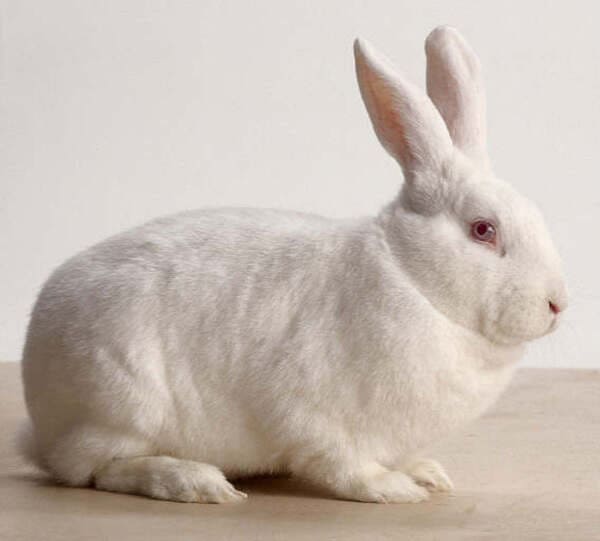
1. New Zealand rabbit (characteristics: fast early growth/good meat production performance/fat and tender meat)
New Zealand rabbits enjoy a high reputation among meat rabbit breeds around the world and are widely considered to be one of the best options. They especially occupy a very important position in the modern meat rabbit industry. This kind of rabbit has a strong head, broad back and round hips, full waist and rib muscles, short and cold-resistant ears. According to statistics, about 90% of the world's farmed meat rabbits are New Zealand rabbits, which is mainly due to their rapid weight gain ability and excellent meat-to-bone ratio. For rabbit breeders, New Zealand rabbits are synonymous with fast meat growth. Looking at the growth cycle, at 8 weeks of age, a young rabbit can easily weigh about 8 pounds, and an adult rabbit usually weighs 9 to 12 pounds.
Although the name "New Zealand" may confuse its origin, the breed was actually bred in the United States and originated in the United States in the early 20th century. Its early growth rate, ability to adapt to the environment, strong disease resistance, high reproductive efficiency and high feed conversion rate make New Zealand rabbits an ideal choice for farmers. Coupled with its docile character, it is easy to manage and Breeding, New Zealand rabbits have undoubtedly become the star breed in the meat rabbit market.

2. California rabbit (characteristics: early sexual maturity/strong adaptability/good reproductive performance/high litter survival rate)
This breed is known as "California Rabbit" or "Eight-Point Black Rabbit" and is an extremely important meat species in the rabbit industry. It ranks among the world's meat-producing rabbit breeds, and its weight is generally in the range of 8 to 12 pounds. Although the California rabbit was originally raised for fur, it has become a leader in meat rabbits because of its sturdy body. Although its growth rate is slightly lower than that of New Zealand rabbits, its strong adaptability, excellent reproductive performance, high survival rate of young rabbits and stable genetic performance have earned it the reputation of "nanny rabbit" in rabbit farms, especially Suitable for large-scale production systems. At the same time, it is also a very good hybrid parent selection in rural commercial rabbit production.
In addition, California rabbits are often selected as the source of high-quality breeding rabbits because of their rich lactation ability and good maternal genetic characteristics. However, it is worth noting that this breed has relatively high environmental requirements for breeding and management before and after weaning, so it is necessary to ensure that the feeding and management conditions can meet the needs of its healthy growth during daily breeding.
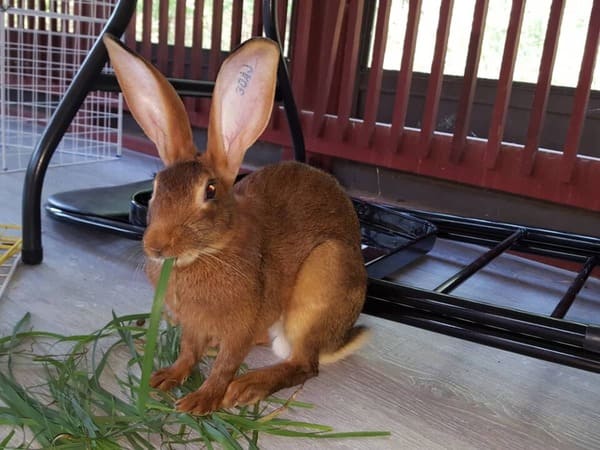
3. Belgian Rabbit (Characteristics: large size/strong constitution/fast weight gain/high slaughter rate/delicious meat/good leather)
On the meat rabbit breed list, the Belgian rabbit has long enjoyed a high reputation and stands among the ranks of large meat rabbits. The adult female body of the Belgian rabbit often weighs between 12 and 13 kilograms, and some individuals weigh an astonishing 18 kilograms, making it a meat rabbit species with extremely outstanding economic value. The Belgian rabbit is known for its ability to tolerate rough eating and is able to utilize a variety of herbs as its staple diet. Under the same feeding and management conditions, they show a lower incidence rate compared with other breeds.
Under ordinary breeding conditions, if given the same high-quality pelleted complete-price feed, Belgian rabbits will not only grow faster, but also have stronger disease resistance. Its feed efficiency ratio can reach 1:3, and its slaughter rate is as high as 52%. Its outstanding advantages are its large size, strong physique, rapid weight gain, and high slaughter rate. It is most praised for its delicious meat and high-quality fur. In China, compared with other large rabbit breeds, the production performance of the Belgian rabbit is better, so it is favored by a wide range of farmers. However, there are some disadvantages to be aware of, including longer cycles that make it difficult to conceive during the summer, and the tendency to develop plantar dermatitis when raised in metal mesh cages.
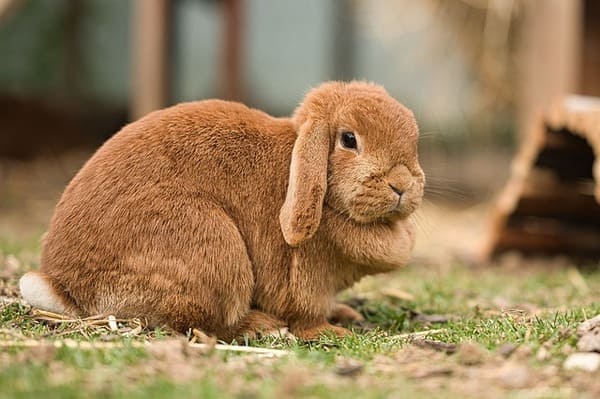
4. Ram rabbit (characteristics: excellent meat quality/strong disease resistance/fast growth)
The male sheep rabbit is the leader among large meat rabbits. It is favored by breeders for its strong disease resistance. It is large in size. The weight of an adult male rabbit can reach 10 to 16 pounds, while an adult female rabbit can weigh 10 to 16 pounds. In the range of 10 to 14 pounds, it is considered a breed with great potential meat value. The ram rabbit is a rabbit species that can adapt to rough feed, and at the same time has a gentle and supple character. It has little activity and appears slightly sluggish, so it is easy to manage and breed.
The excellent quality of its meat cannot be underestimated. It is high in protein, low in fat, and contains low levels of cholesterol. It is deeply loved by consumers. The meat is delicate in texture, pure in flavor, tender and smooth in taste, and has a natural aroma. The lean meat rate of ram rabbit is as high as over 82%, demonstrating its unique advantages in food value. In terms of growth rate, the ram rabbit also shows amazing potential, and can easily reach a weight of 4.1 kilograms at the age of five months. Under general feeding conditions, the weight of a 90-day-old male rabbit can be close to 2.5 kilograms, and the average daily weight gain during the fattening period can exceed 50 grams. Its feed conversion rate is also quite efficient, at 2.9:1. The combination of all these characteristics makes the ram rabbit not only an important species in the field of meat rabbits, but also an ideal choice for farmers pursuing economic benefits.
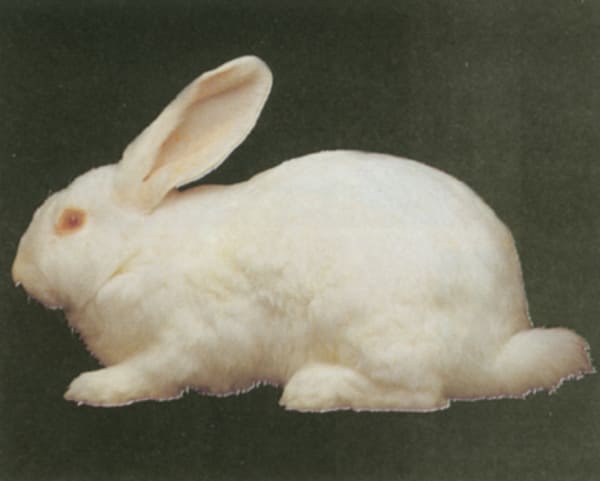
5. Zika rabbit (characteristics: high meat production performance/strong fecundity/strong disease resistance)
As a specialized meat rabbit strain bred in 1980 by German rabbit breeding experts and professors, Chika rabbit has a prominent position in the world's meat rabbit industry. This breed has become a widely praised choice due to its four major characteristics: First, the Chika rabbit's fur is pure white, and its body is plump and dignified, especially its buttocks, which appear large and round, so it has the advantage of having a high meat rate. Advantages, some adult individuals can even weigh up to 15 kilograms; the second point is that their reproductive capacity is strong, the female rabbit has excellent lactation ability, and can feed the young rabbits without artificial intervention, and the number of breeding times per year is as many as 8 times, with the highest single A second litter can produce up to 15 baby rabbits, and the survival rate of young rabbits is as high as 98%. The third feature is that it has excellent disease resistance, especially against common skin diseases, gastrointestinal diseases and foot dermatitis in the south. problem, showing strong adaptability and resistance; finally, Chika rabbits are eclectic about food and can adapt to a variety of feeds.
Research shows that the meat performance of Zika rabbits is significantly better than that of California rabbits, which are widely respected across the country, and Harbin white rabbits bred in China. This makes Zika meat rabbits an ideal choice for efficient breeding and production of high-quality commercial meat rabbits.
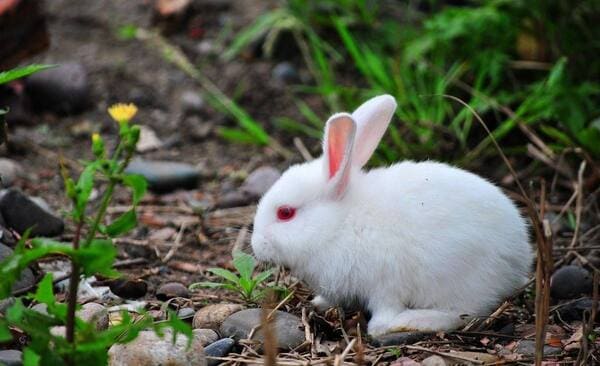
6. Harbin White Rabbit (Characteristics: Third Prize of National Science and Technology Progress Award/High Reproductive Power/Fast Growth/Rough Food Tolerance/Strong Adaptability/Stable Genetics)
For domestically looking for a meat rabbit breed that is easy to breed, the Harbin White Rabbit is an ideal choice. As the first domestic rabbit breed bred in China, the Harbin White Rabbit is favored for its strong bones, strong limbs and well-developed muscles. Adult males of this rabbit usually weigh between 11 and 12 pounds, while adult females weigh between 12 and 13 pounds. Through nearly 10 years of nationwide promotion and breeding programs, Harbin white rabbits have been proven to have stable genetic characteristics, strong environmental adaptability and high tolerance to crude fiber feed. It has good reproductive performance, fast growth rate of young rabbits, high feed conversion efficiency, and performs better than many imported rabbit breeds in various biochemical tests.
The contribution of Harbin White Rabbit was recognized by the third prize of the National Science and Technology Progress Award in 1990, and it was selected as one of the key promotion projects of national scientific and technological achievements. The practice of crossing with local rabbit breeds shows that as long as the breeding conditions are properly improved, the obtained hybrid offspring will significantly exhibit hybrid vigor. Not only will the growth rate be accelerated, but the slaughter rate will also increase accordingly, showing the diffusion potential and development prospects of the Harbin white rabbit breed. .
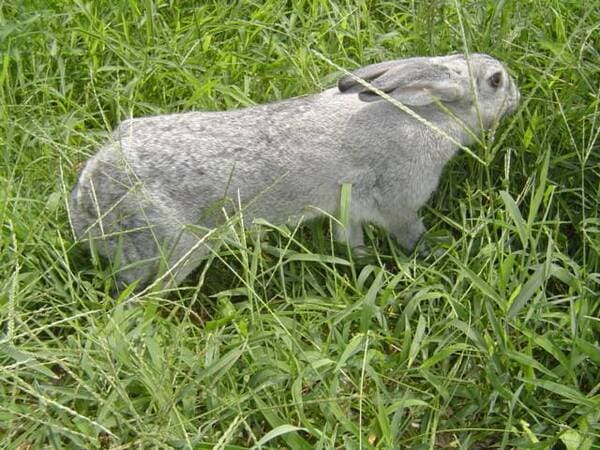
7. Purple blue rabbit (characteristics: used for both skin and flesh/strong adaptability/high fecundity)
Blue and purple rabbits are known for their valuable fur and dual use as delicious meat.Tuer has a good reputation in the market. This breed enjoys wide distribution in China due to its high quality fur, strong adaptability and high reproductive efficiency. Known for its tough disease resistance and high adaptability to coarse grain feeds, blue and purple rabbits not only have thick skin and bright coat colors, but have also set off a global breeding boom many times in history and have become the darling of rabbit breeders.
In our country, three types of purple and blue rabbits - standard type, American type and heavy type - are all distributed, especially the standard type with the largest number of animals. Their strong physique, high adaptability to China's various natural environments, and their tolerance for the relatively free-style feeding and management conditions in rural areas all make blue and purple rabbits a good breed suitable for breeding in vast cage areas. Undoubtedly, the robustness of this breed makes it one of the preferred breeds suitable for breeding in my country's diverse agricultural environment.

8. Saibei Rabbit (Features: Large-sized meat and skin/high lean meat content)
Saibei rabbit, this breed is bred by carefully crossing the tawny French ram rabbit and the tawny Flanders giant rabbit that were recently introduced to my country. It is known for its large size, with the weight of newborn rabbits ranging from 60 to 70 grams, and when weaned, the weight of 30-day-old rabbits can easily reach 0.65 to 1 kg. The low level of feeding and management has little impact on the growth momentum of Saibei rabbits. The average monthly weight gain rate when they are 2 to 4 months old is 0.75 to 1.15 kg. After adulthood, the average weight of the Saibei rabbit is between 5.0 and 6.5 kilograms, and can even reach 7.5 to 8.0 kilograms at its peak.
The reproductive efficiency of the Saibei rabbit is extremely high, with the number of litters per litter ranging from 7 to 8, and the highest number on record can even reach 15 to 16. Its many virtues add up to an impressive list, including large size, rapid growth rate, high reproductive capacity, tenacious disease resistance and low morbidity. Coupled with the instinct to tolerate rough feeding, excellent adaptability and docile personality, these qualities allow the Saibei rabbit to grow smoothly without careful feeding management. It is particularly noteworthy that Saibei rabbit has a very high lean meat content, accounting for more than half of its total body weight, which makes it of great potential value in the meat rabbit market.
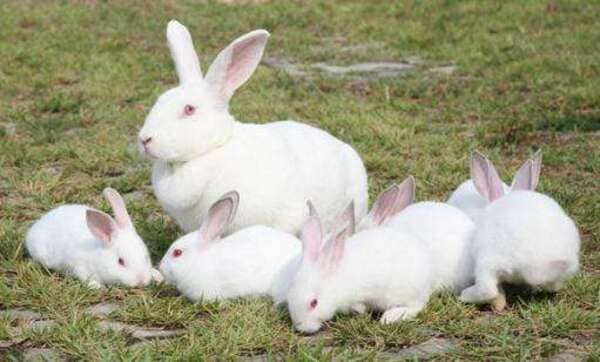
9. Japanese Big-Eared Rabbit (Characteristics: Fast growth/strong fecundity/excellent skin quality)
The Japanese big-eared rabbit originates from Japan and is a new breed produced by mating Chinese white rabbits with native Japanese rabbits. This kind of rabbit has a large body size, coupled with its rapid growth and development ability and strong reproductive capacity, its skin is of high quality, and its meat quality is also well received, so it has gained the reputation of "Oriental breed with excellent meat and skin". It is mainly divided into three types: large, medium and small. Among them, large rabbits are more commonly bred in China. They can breed 5 to 7 times a year, and the number of litters each time is usually 8 to 10, and the highest record can even reach 17. .
Japanese big-eared rabbits are characterized by early maturation, fast growth, and good resistance to roughage and maternal qualities. They are often selected as "nanny rabbits" to assist in breeding efforts. Since being introduced to China, in addition to being widely used as experimental rabbits in scientific research, due to their excellent meat quality and high economic benefits, Japanese big-eared rabbits have been frequently crossed with other rabbit breeds to produce high-quality commercial meat rabbits. This further enhances its application value and market position in the field of rabbit breeding.
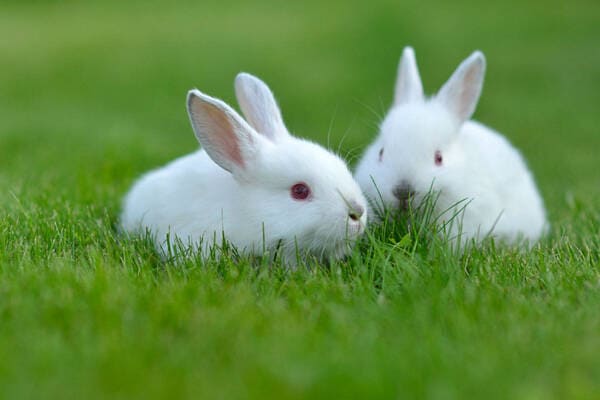
10. Danish White Rabbit (Characteristics: Good adaptability/strong disease resistance/strong constitution)
The white rabbit from Denmark, commonly known as the Lanteris rabbit or the Landry rabbit, is an excellent rabbit breed directly introduced to China from Denmark in 1973. Known for its use of both skin and meat, this medium-sized rabbit is a typical rabbit breed that occupies a place in modern rabbit farming. The appearance of the Danish White Rabbit is characterized by its white coat, round buttocks and rich meat, showing its physical characteristics as a meat rabbit; its ears are small and upright, the female rabbit has a special throat pouch on the chin, and its fur is thick and leathery. Excellent texture.
This rabbit breed has commendable reproductive capabilities and is known for its high litter size and stable survival rate. It grows rapidly, has a friendly and easy-to-raise character, and has tenacious disease resistance and high adaptability to roughage. The average number of litters per litter can reach 7 to 8, and the weight of newborn rabbits exceeds 50 grams. The weight of the 40-day-old rabbits at weaning can reach 0.9 to 1.1 kilograms, and the weight can increase to 2 to 2.3 kilograms at 90 days. This breed not only occupies an important position in China's breeding, but also has become an indispensable and valuable asset in the rabbit breeding industry due to its excellent breeding and production performance.
The top 10 best meat rabbit breeds in the world are mainly recommended based on meat quality/growth speed/disease resistance/reproductive ability of meat rabbits and comprehensive reference to relevant Internet rankings/lists. The list is for reference only, and the data is as of November 2023. March 30th, if you have any questions, please leave comments/criticisms and corrections at the end.
animal tags: Rabbit Chinchilla
We created this article in conjunction with AI technology, then made sure it was fact-checked and edited by a Animals Top editor.